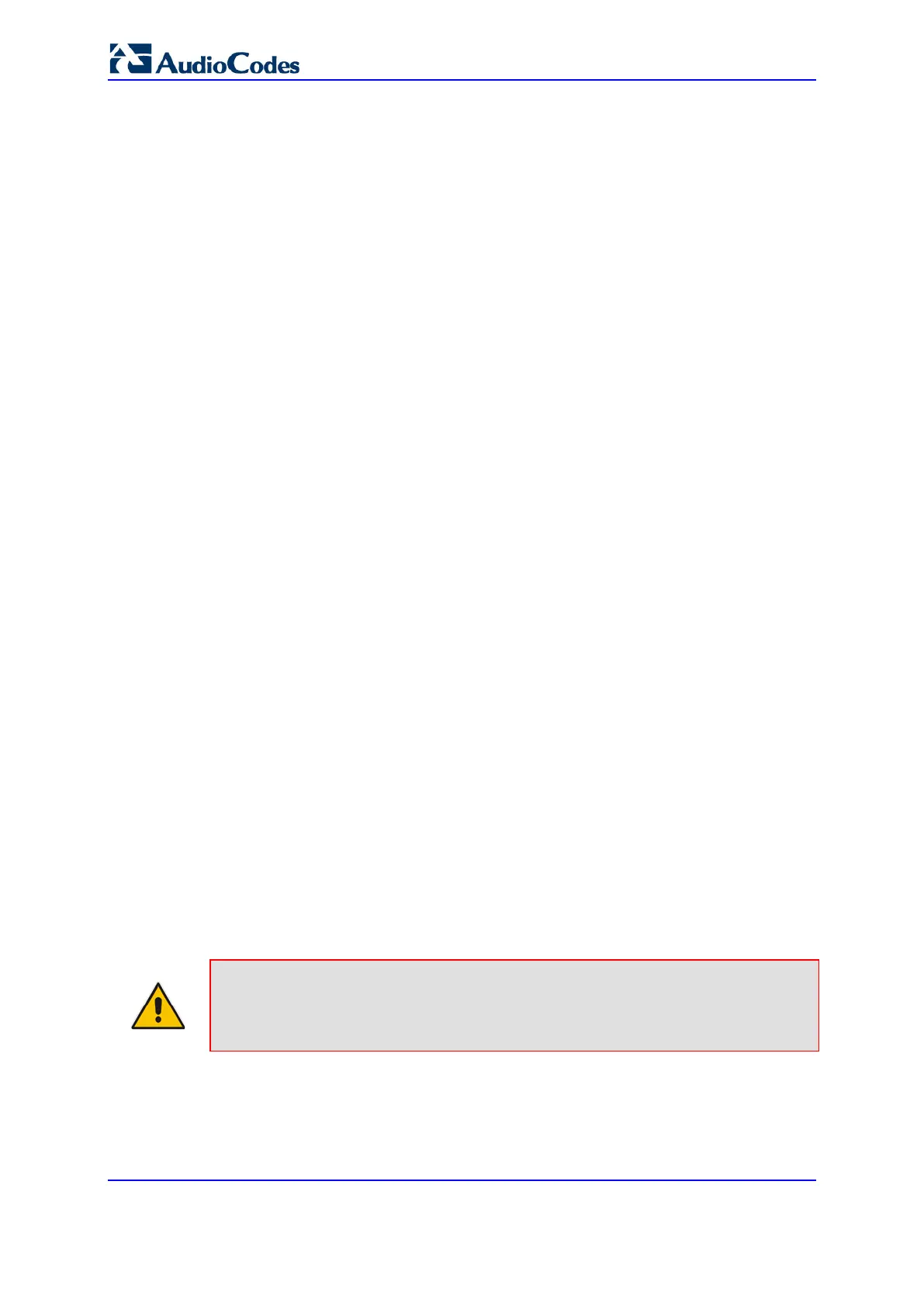User's Manual 628 Document #: LTRT-10632
Mediant 800B Gateway & E-SBC
• 'Forward on Do Not Disturb Digit Pattern Internal' (DigitPatternForwardOnDND):
Defines the digit pattern to indicate 'call forward on do not disturb' when the
original call is received from an internal extension.
• 'Forward on No Reason Digit Pattern Internal' (DigitPatternForwardNoReason):
Defines the digit pattern to indicate 'call forward with no reason' when the original
call is received from an internal extension.
• 'Forward on Busy Digit Pattern External' (DigitPatternForwardOnBusyExt):
Defines the digit pattern to indicate 'call forward on busy' when the original call is
received from an external line.
• 'Forward on No Answer Digit Pattern External'
(DigitPatternForwardOnNoAnswerExt): Defines the digit pattern to indicate 'call
forward on no answer' when the original call is received from an external line.
• 'Forward on Do Not Disturb Digit Pattern External'
(DigitPatternForwardOnDNDExt): Defines the digit pattern to indicate 'call forward
on do not disturb' when the original call is received from an external line.
• 'Forward on No Reason Digit Pattern External'
(DigitPatternForwardNoReasonExt): Defines the digit pattern to indicate 'call
forward with no reason' when the original call is received from an external line.
• 'Internal Call Digit Pattern' (DigitPatternInternalCall): Defines the digit pattern to
indicate an internal call.
• 'External Call Digit Pattern' (DigitPatternExternalCall): Defines the digit pattern to
indicate an external call.
• 'Disconnect Call Digit Pattern' (TelDisconnectCode): Defines a digit pattern that
when received from the Tel side indicates the device to disconnect the call.
• 'Digit To Ignore Digit Pattern' (DigitPatternDigitToIgnore): Defines a digit pattern
that if received as Src (S) or Redirect (R) numbers is ignored and not added to
that number.
6. Click Apply.
27.19 Converting Accented Characters from IP to Tel
The Char Conversion table lets you configure up to 40 Character Conversion rules. A
Character Conversion rule maps (converts) accented characters (Unicode / UTF-8)
received from the IP side into simple ASCII characters (ISO-8859) for sending to the Tel
side (analog or digital). Typically, the device receives the caller ID and calling name in
Unicode characters (in the SIP INVITE message). Unicode characters consist of two bytes,
while ASCII characters consist of one byte. Accented characters are used in various
languages such as German. An example of such a character is the umlaut (or diaeresis),
which consists of two dots placed over a letter, as in ä. The importance of this conversion
feature is that it allows PSTN entities that do not support accented characters, to receive
ASCII characters. For example, the device can convert the Unicode character ä into the
ASCII character "ae".
Note:
The table works in conjunction with the ISO8859CharacterSet parameter.
When the parameter is set to [0] (Latin only), it converts accented characters into
ASCII (e.g., ä to "a"). However, the table can be used to overwrite these "basic"
conversions and customize them (e.g., ä to "ae" instead of the default "a").
The following procedure describes how to configure Character Conversion rules through
the Web interface. You can also configure it through ini file (CharConversion) or CLI
(configure voip > gateway dtmf-supp-service dtmf-and-dialing > char-conversion).

